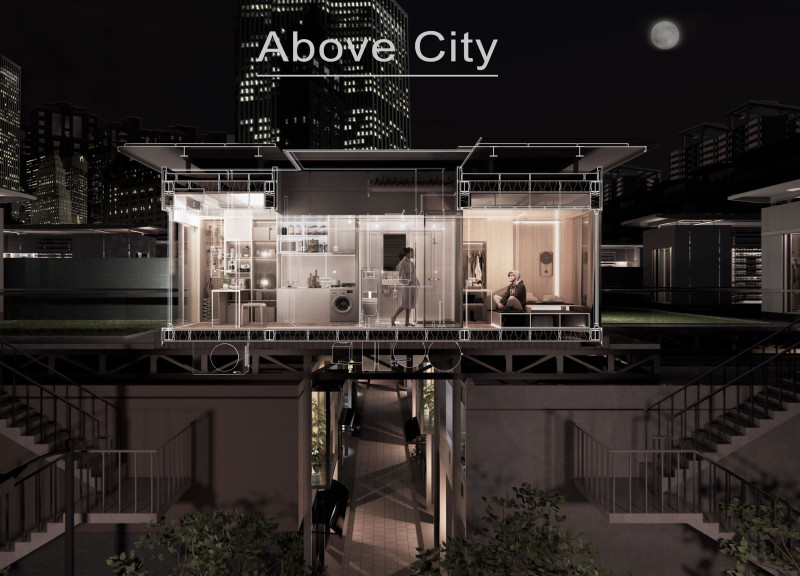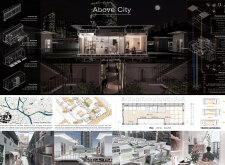5 key facts about this project
The project operates as a modular housing solution for young couples, seeking to offer an engaging lifestyle with minimal impact on the ground level. Each unit integrates elements of sustainability, social interaction, and adaptable living spaces, fostering community among residents.
Unique Design Approaches
One of the standout features of "Above City" is its *Integrated Wall* concept, which serves as a multifunctional structural component. This wall houses essential mechanical systems and maximizes interior space. The service belt, which features shallow utility compartments, allows for efficient plumbing and electrical setups while maintaining an open layout within the living areas.
The design includes a *Living Belt*, offering a range of spatial configurations that can be customized according to resident needs. This adaptability is vital in urban design, catering to varying lifestyles without compromising on functionality. The integration of green spaces within the structure, particularly in the *Green Garden* area, provides residents access to nature, which is crucial in urban settings for promoting mental well-being.
Sustainability is another cornerstone of the project. The incorporation of a *Photovoltaic System* captures solar energy, contributing to the heating and electrical needs of the units. The project also employs a comprehensive water management system, utilizing rainwater harvesting and greywater recycling, underscoring the commitment to ecological integrity in urban development.
Innovative Use of Materials
In terms of materiality, "Above City" employs a combination of steel, glass, wood, concrete, and composite panels. Steel offers structural strength while allowing for lightweight construction techniques that are critical for elevated living. Glass is utilized in the facade to enhance natural light intake and visual connectivity with the surrounding urban environment. Wood introduces a tactile element to interior spaces, while concrete serves as the foundational material, ensuring durability and stability.
The mix of materials not only increases the project’s resilience but also aligns with contemporary aesthetic preferences in urban architecture. The use of composite panels for exterior treatments further enhances thermal and acoustic performance, which is vital for residential comfort in a bustling city.
For readers interested in deeper insights into this architectural project, exploring the architectural plans, architectural sections, and architectural designs can provide a more comprehensive understanding of the intricacies involved in the "Above City" project. The consideration of architectural ideas presented here highlights how thoughtful design can address urban challenges effectively.























